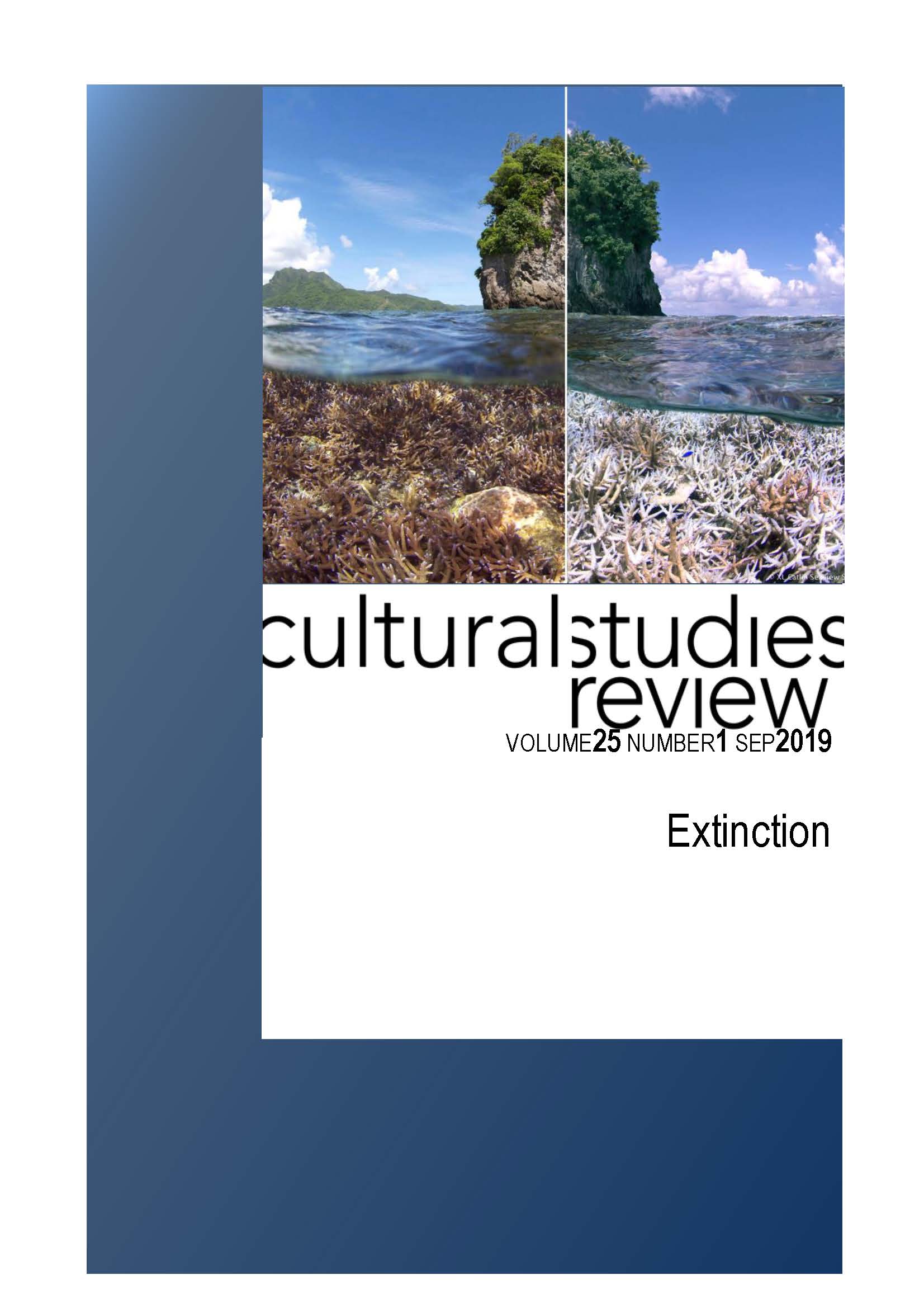Coral Cultures in the Anthropocene
Main Article Content
Abstract
This essay discusses how coral is becoming a kind of charismatic megafauna and a cultural icon for extinction in the Anthropocene. Until recently, most of the cultural associations around coral emphasized the strangeness and exotic qualities of coral that combines animal, mineral, and vegetable bodies. Darwin studied coral as a robust maker of atolls, while Melville wrote about coral stringing the Pacific Islands as ‘marine gardens.’ More recent theorizing on coral from Eva Hayward and Stefan Helmreich has been keen to emphasize how coral is transbiological and queer in the multi-species kinships it enables. However, in recent decades, as evidence of bleaching and mass coral die-offs have been registered by marine scientists, coral is also fast becoming a barometer for the sixth mass extinction. I look at how contemporary cultural representations of coral are straining to reconfigure the life of coral as caught between associations of fragility and resilience, seeing coral as capable of supporting indigenous island civilizations while not being able to survive ocean warming of less than one degree Celsius. I examine the work of recent artists (Courtney Mattison and Alison McDonald) whose coral-themed work combines science and spectacle. These artists return to older visions of coral figured fantastically as both living and dead, yet updating this view for today, as we find coral to be a primary figure for life and death in the Anthropocene. I finish with a discussion of the recent documentary film Chasing Coral (2017) as negotiating multiple simultaneous visual tropes and coral conditions. This film aims to provide viewers with a sense of time constraints for scientists, filmmakers, and for coral reef colonies under extreme stress in areas including the Great Barrier Reef. The film tries to articulate a pathway between scientific documentation, environmental activism, and visual drama, ultimately composing these perspectives into a work that suggests that the imbalance and overlap of these ways of engaging with coral will provide a model for how to form a global coral culture movement.
Article Details
Section
Authors who publish with this journal agree to the following terms:
a) Authors retain copyright and grant the journal right of first publication with the work simultaneously licensed undera Creative Commons Attribution License that allows others to share and adapt the work with an acknowledgement of the work's authorship and initial publication in this journal.
b) Authors are able to enter into separate, additional contractual arrangements for the non-exclusive distribution of the journal's published version of the work (e.g., post it to an institutional repository or publish it in a book), with an acknowledgement of its initial publication in this journal.
c) Authors are permitted and encouraged to post their work online (e.g., in institutional repositories or on their website) prior to and during the submission process, as it can lead to productive exchanges, as well as earlier and greater citation of published work (See The Open Access Citation Advantage Service). Where authors include such a work in an institutional repository or on their website (ie. a copy of a work which has been published in a UTS ePRESS journal, or a pre-print or post-print version of that work), we request that they include a statement that acknowledges the UTS ePRESS publication including the name of the journal, the volume number and a web-link to the journal item.
d) Authors should be aware that the Creative Commons Attribution (CC-BY) License permits readers to share (copy and redistribute the work in any medium or format) and adapt (remix, transform, and build upon the work) for any purpose, even commercially, provided they also give appropriate credit to the work, provide a link to the license, and indicate if changes were made. They may do these things in any reasonable manner, but not in any way that suggests you or your publisher endorses their use.
